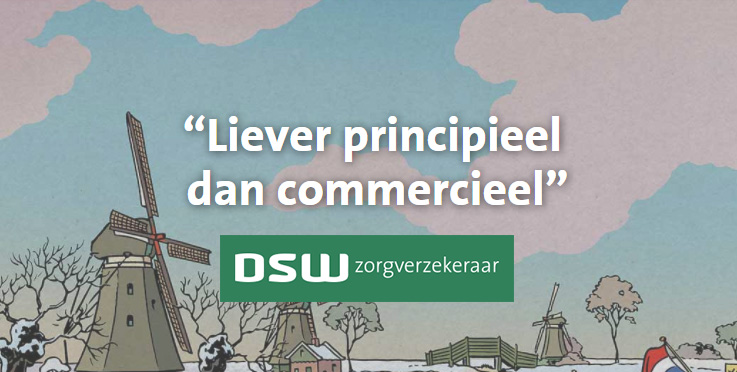Summaries per chapter with the 3rd edition of Psychology of Prejudice and Discrimination by Kite & Whitley - Bundle
Study guide with The psychology of prejudice and discrimination by Whitley & Kite
Study guide with The Psychology of Prejudice and Discrimination
Online summaries and study assistance with the 3rd edition of The Psychology of Prejudice and Discrimination by Whitley & Kite
- For Booksummaries with The Psychology of Prejudice and Discrimination by Whitley & Kite see Summaries per chapter with the 3rd edition
- For summaries with earlier editions of The Psychology of Prejudice and Discrimination by Whitley & Kite, see the supporting content of this study guide
Related content on joho.org
How to introduce the concepts of stereotyping, prejudice, and discrimination? - Chapter 1
Since Martin Luther King Jr. gave his speech, race relations have improved. We find ourselves ‘modern’ and ‘civilized’, when it comes to racial questions and can’t believe that fifty years ago things were so different. Still, things are not so optimistic as they seem. There still are racial tensions in modern countries. In some countries there seems to be a double standard. Black people, for example, get a harsher punishment than White people for the same crime (Jena 6). One research also showed that the darker a person is, the bigger his punishment will be.
What is said about race and culture?
Race is an important factor in psychological research (just as sex and age). That’s obvious because that’s one of the first things we see when we meet someone. Taking in information about race, age and sex is an automatic process and we (therefore) make assumptions on the basis of this information. This can lead to stereotyping. This text specifically says can, because sometimes people view others through the lens of race and sometimes they don’t. For example, in 1988 a centre was opened in an all white neighbourhood in Indianapolis. Convicted child molesters were supposed to be treated in that centre. Not one resident complained about this centre. When authorities decided to change the centre into a homeless centre for veterans and some of these veterans turned out to be black, the neighbourhood started complaining.
What are historical views of ethnic groups?
Views of social groups can change quickly. After 9/11, Americans started to have an extreme negative view of people from the Middle East. There was an increase in anti-Muslim hate crimes and violence against mosques. The ‘biggest’ example of changing views of social groups is probably people’s view of Italian immigrants. When Italian immigrants came to the United States in early 1900, they were ridiculed. They were even seen as non-White. Italians, Irish people, and Jews from Eastern Europe that came to the States were seen as another race back in the days while they were all white. Nowadays, these people are seen as white and immigrants from Europe don’t find disadvantages from their ethnical background anymore.
Usually when you ask somebody to determine what race another person is, he or she will base the answer on the skin colour of that person. Why do we base this on skin colour and not on another physical characteristic? Morning (2011) says race "is a system for classifying human beings that is grounded in the belief that they embody inherited and fixed biological characeteristics that identify them as members of racial groups".
The word ‘race’ was not used until 1600 and in that time it had another meaning than it has now. Race referred to any group of people with the same characteristics, like a group of nurses, teachers or doctors. In the late 1700s the word ‘race’ took on the meaning it has now, namely indicating groups of people that share common physical characteristics, like skin colour.
This shift in meaning began when Europeans were sailing the seas and discovering other continents. The native inhabitants of the continents (Africans, Asians and native Americans) had a different skin colour from Europeans. Racial categories were used to ‘prove’ the superiority of Europeans and justifying their actions against the other races.
Race is a social category and not a biological one. Scientists find more differences within a racial group than between racial groups. People often say that black people or Latin people have bigger lips than white people, but this is superficial and an unreliable way to distinguish between groups of people. These differences in skin colour, hair colour and other features are adaptations to the climate (because Africa is so warm, people developed a darker skin). When racial segregation in the United States was legal, people could change their racial classification because race was defined by law. Over the years, 63 racial categories existed. Race could never be changed by law if it were a biological fact. This only shows that there is just one race: the human race. Race is a set of social categories and is therefore an important psychological subject. Race plays a huge part in cultures. People from one culture share attitudes, beliefs and behaviour with one another and that’s why culture can influence stereotyping. People usually don’t know that they operate according to their cultural background. Their actions are (unconsciously) driven by cultural expectations.
Why does culture have an influence on the perception of race and ethnicity?
Cultural impact on stereotyping may lead to group privileges. To understand the influence of culture on perceptions and actions towards other social groups, you must first understand the meaning of culture. Culture is a unique meaning and information system, shared by groups of individuals and are about basic needs of survival, pursue of happiness and well-being. Members of these culture groups hold sets of beliefs about others, such as values, attitudes and opinions. White people, for example, don’t think a lot about their race. This is because they are the dominant group in the society and everything they believe or do seems normal to them. When White people buy a car or house, their race doesn’t play a huge role. When Black people have a really good job, White people are kind of surprised by that. They don’t expect Black people to have had a really high education. Culture also influences one's view of immigrants. They can be seen as bringing new values and customs into a host country, or they can be seen as competitors for host society's economic resoursces.
What is group privilige?
Privileges for groups are not limited to race. Men usually are privileged over women and heterosexuals over homosexuals. When one group gets an unearned favoured state because of their race, gender or social class we call this ‘group privilege’. One group has certain advantages over other group(s) and members of that group usually don’t really know that they have an advantage over the other groups. These advantages are usually unearned; they are not handed to people who worked hard for it, but to people who belong to a certain group. Some people might think that the advantages one certain group gets are small and don’t have a huge impact. But all these little advantages have a big impact together. Every disadvantage against a person will hurt his or her self-esteem. Members of the privileged group usually think that discrimination is someone else’s problem and that they don’t have to do anything about it. So basically, discrimination is a problem for Black people, gays and women.
What is said about stereotypes, prejudice and discrimination?
What are stereotypes?
Lippman (1922) gave a great definition of stereotypes. He said that stereotypes are pictures in our head, not based on certain knowledge but made by oneself. Lippman’s definition still fits the definition of what we call stereotypes. Stereotypes are beliefs and opinions about certain groups. Stereotypes are pictures in our head that can come from shared beliefs we got from our culture. These beliefs can be learned from parents, friends, media and books. People also get beliefs by observing the world.
Researchers consider whether stereotypes are accurate or inaccurate. Stereotypes are not always completely false; they may be based on truth (from observation). But this truth may be exaggerated and used on all members of certain groups. Then there are really ‘stupid’ stereotypes. People once thought that if women were to be educated, blood would rush to their brains and it would reduce their reproductive capacities.
A third aspect has to do with the fact that stereotypes can be both descriptive and prescriptive. Stereotypes can either tell us which characteristics a group member is believed to have, but can also tell us what people believe group members should be like and should do. So when we think about educators at elementary school, we usually think about women and not men. Stereotypes can also be positive. An example of a positive stereotype is that Asians are high achievers or that men are good with reasoning. But don’t think that stereotypes are not as bad as they seem. Even positive stereotypes can have negative consequences. One example is that women are good with children and that they would make good elementary school teachers. This positive stereotype has a negative effect on men who want to become elementary school teachers. If stereotypes are bad, why did we start using them? Well, we use stereotypes to organize complex social world around us. We would otherwise have too much information to deal with and that’s why we use stereotypes.
What is prejudice?
Prejudice is a reaction or attitude towards people of certain groups. Reactions towards certain people can stem from emotions, either good or bad. These emotions are usually automatic and rise without conscious consideration. One group might react to the other if the other group threatens their own group or if the other group is interfering with their goals (especially competition between jobs). But the other group may also be seen as threatening because it has other goals. Emotional reactions can also be caused by a reaction with other group members. People would feel disgusted when they interact with foreigners or gays. Also, emotional reactions can also be constantly there. There are people who are always intolerant of other social groups.
People who think of themselves as not being prejudiced, might unconsciously be prejudiced. Usually these feelings are not extreme but feelings of unease and anxiety. These people don’t want to be prejudiced, but learned these things from their social background.
What is discrimination?
Discrimination is treating people differently because they are member of a certain group. This does not have to be a negative treatment. Just as with prejudice and stereotyping, there could also be positive discrimination, such as treating people better because of their group membership. Discrimination can manifest itself in different ways. It can be verbally and behaviourally. People from certain groups can be ignored, made fun of, be insulted, intimidated and assaulted.
Interpersonal discrimination is when one person gets treated unfairly by another because of the person’s group membership. This occurs from person-to-person level. This may occur because the assaulters hold certain stereotypic beliefs. This leads people to think (and behave) that their own group is superior to the other. This can be passive, like personally ignoring Black people and helping White people first or it can be active, by making mean remarks.
Organizational discrimination isdiscrimination that occurs at the workplace and is caused by the company itself. Usually this is racial or gender discrimination. White men are over represented as managers and white women and minority groups are underrepresented. Women are over represented in clerical jobs and men in skilled jobs (like electricians). Minority men are over represented as labourers (working in a factory) and white men are over represented in prestigious jobs. People may argue that these findings are misleading, because minority workers didn’t have the same chances as white people did. One research, however, showed that white people get paid more than black and Hispanic people, even if they all have the same degree of education and the exact same job. White men were paid better than any other group, except the group of Asian men.
Institutional discrimination is a type of discrimination that occurs when the norms or policies of a social institution (like family, education and criminal justice system) result in different outcomes for members of one group than for another group. Usually, decisions are made that are neutral to sexual orientation, sex and race but they end up having an impact on a certain group. This type of discrimination usually occurs subtle. Examples of this type of discrimination are segregation of schools and events that occurred when hurricane Katrina came to New Orleans. Some people said that the United States president of that time, George W. Bush, did not do enough to help the people in New Orleans because they were mostly Black.
Cultural discrimination is when a certain group retains power within a culture and decides what the cultural values should be. They reward people who hold these values and punish people who have different cultural values. The culture of minority groups is in danger that way. Cultural discrimination can occur in subtle ways, like in advertisement or toys. Dolls usually are white and blond and have European features. It kind of tells us that the more European someone looks, the more beautiful he or she is. One research showed that even Black people perceived others with a lighter skin as being more attractive than people with a darker skin. This can have serious outcomes. Black people convicted of murdering a white person are more likely to get the death penalty if they have black (stereotypical) features.
There are governments that endorse cultural discrimination. In Australia part-Aboriginal children were taken from their homes and put in schools miles and miles from their parental home. The government did this, because it thought that by not having a lot of contact with the Aboriginal culture, these children would ‘lose’ their Aboriginal side and would behave according to white culture. The characteristics of their white ancestry were valued, but the characteristics of their Aboriginal side were not. It is really hard to recognize cultural and institutional discrimination and especially by those who are not affected by it.
What is the relationship between stereotyping, prejudice and discrimination?
The relationship between these three things is complex. Knowing something about stereotypical beliefs does not mean that you are prejudiced. A research showed that low-prejudiced and high-prejudiced individuals knew the same things about a certain stereotype, but low-prejudiced people rejected that stereotype while high-prejudiced people accepted it. As said before, people learn these stereotypic beliefs from the media, friends and family, but it does not mean that they accept it.
A bigger problem is that people can access stereotypes unconsciously and that even people who are low in prejudice can be influenced by this. Luckily, people who are aware that prejudice is wrong and try to eliminate their prejudice can do so successfully. Researchers also make a distinction between implicit prejudices (reactions towards groups that occur automatically) and explicit prejudices (attitudes that people are aware of and can easily control).
What are targets of prejudice?
Take into account that people belong to many social groups at once, known as intersectionality. This intersectionality can also influence one's experiences. People usually categorize race-related information like they categorize gender-related information. Specific targets of prejudice are usually described with the word ‘ism’, like sexism and racism. Isms are not the same as prejudice. They go further. Isms have certain characteristics, with the first characteristic being that they combine prejudice with a group-centred worldview. This leads to a superiority of one group over the other. The second characteristic is that isms are based on the desire to control other groups. This is done by law and social issues and these groups try to prove scientifically that their ideas are valid. The last characteristic is that isms are reflected on behaviour. This can be done by hate crimes, by making jokes /verbally assaulting others or by ignoring others.
What is racism?
When people hear the word prejudice, they usually think of racial and ethnic prejudice or racism. Most research on racial prejudice focuses on anti-black discrimination. There are three reasons why; Black people were treated really badly during the ‘slave period’ and even after that. They were seen as the bottom of society and even seen as lesser than human. Although other minority groups have been treated badly, Black people had to suffer the most. Also, anti-black prejudice is more pervasive than prejudice against other groups. That’s also a reason why psychologists focus on Black people. The third is that prejudice has changed. It used to be extreme and since the 1980s it reached a more subtle form.
Nowadays, racism manifests itself in different ways in the United States. One way by which it manifests itself is by denigrating the other group’s culture. Rap music is usually identified with Black culture and is condemned in the United States. But one might wonder if this is because of violent and sexist lyrics or because it’s just part of the Black culture.
One study gave a set of violent lyrics to a group of white adults. The lyrics were from a folk song and one group was told that the lyrics were from a rap song, the second group was told that the lyrics were from a country song and the third group was told that the lyrics were from a folk song. When the song was labelled as a rap song, it got the most negative ratings. Also, when people learned that the song was performed by a Black person it got more negative ratings than a song performed by a white person. Another example is that minority groups are pulled over more frequently than white drivers. This is because people think that minorities are more likely to commit a crime (like drug trafficking).
What is said about gender and sexual orientation?
Prejudice is present against women in Western culture, restriciting certain roles and women's influence in society. The benevolent aspects of female stereotypes are; weak, vulnerable, needing protection. Transgender people believe that the gender they were ascripted at birth isn't matching their true selves, they receive widespread prejudice. Heterosexism descibes a system that denies, denigrates, and stigmatizes any nonheterosexual form of behavior. This leads to prejudice against homosexuals or bisexuals. This is also called homophobia. Heterosexism seems to be more socially acceptable than other forms of prejudice.
What is said about age, ability and appearance?
Butler (1969) introduced the term ageism to refer to negative reactions individuals can have to older people. The benevolent component is also present, think about the doting grandparent image, but also includes negative stereotypes such as lack of competence, being weak.
People can also feel great discomfort when being around people with physical disabilities (PWD). This may also be the cause of high unemployment rate for PWDs.
Also weight, in the physical appearance part, can be a source of prejudice and discrimination. Attractive people always enjoy more advantages, and women are likely to be judged based on their physical appearance.People who are prejudiced against fat people often think it’s their own fault that they are fat. They are lazy and have no self-discipline. Also, prejudiced people dislike others who violate values. One value people hold dear is self-restraint. They often think that fat people violate this rule.
What is said about classism?
Although the United States is a wealthy nation, it still has some poverty and different social classes. A person’s place in the social hierarchy is determined by one’s economic status, racial group or religious group. Classism (therefore) is prejudice against a person’s social class. Usually people hold negative views against the poor and positive views against the wealthy. Poor people are more too often blamed for their situation. They are seen as lazy and not very intelligent and that’s the reason why they are poor (at least, this is what prejudiced people think).
Researchers bought fruit from a supermarket in a low socio-economic status neighbourhood, a middle class neighbourhood and an upper class neighbourhood. Participants had to evaluate the fruit for taste and appearance and they said that fruit from a low socio-economic neighbourhood was less fresh than the fruit from the other neighbourhoods. Some people even refused to taste the fruit from the low class neighbourhood. These results show there’s a strong relationship between social class and race: low status neighbourhoods have a higher percentage of minority residents than the other neighbourhoods.
What is said about religion?
Prejudice based on religion has existed for a very long time, but has been studied less than racial prejudice. This is maybe because prejudice based on religion has been less salient. During World War II anti-Semitism became salient and when the anti-Muslim prejudice rose, researchers started to research religious prejudice.
What are the theories of prejudice?
There are a lot of theories of prejudice, but not one covers the whole deal. Each theory usually covers one aspect of prejudice.
What is scientific racism?
Scientific racism is the interpretation that results are interpreted to show minority groups in a negative light. Scientific racism was used to prove superiority of the dominant group and to justify their actions against other groups. Before the 1920s scientists agreed that White people were superior to Black people. They showed that White people were more intelligent than Black people. The actions of White people against Black people were justified that way.
What is the psychodynamic theory?
In1920 scientists saw that prejudice wasn’t natural and that it’s a social problem, created by wrong beliefs. In the 1930s and 1940s social scientists searched for the reason why people turn to prejudice. They found their answer in the psychodynamic theory and found that people tended to blame the bad situations of that time (like the Great Depression) on somebody. They had to direct their frustration towards somebody and decided to do this toward minority groups.
After World War II scientists tried to figure out how scientists could support something like the Holocaust. They found that there are certain types of individuals who are more susceptible to prejudice than others called the authoritarian personality. These people are more likely to do and believe what authority figures tell them. This type of personality rooted in early childhood. Children who had to obey strict rules and were physical punished were more likely to develop an authoritarian personality. The psychodynamic perspective also shows that prejudice is used to improve one’s self-esteem.
What is the sociocultural theory?
In the late 1950s the U.S. civil rights movement arose and scientists started to view prejudice and stereotyping from a sociocultural perspective. The sociocultural perspective sees stereotypes as something that culture gives and that can’t be taken away easily. There are two underlying perspectives in this model: the structural-functionalist view and the conflict perspective. The first perspective thinks that people use/learn the culture’s stereotypes to gain social acceptance. The conflict perspective believes that a society exists out of groups with different values and that people adopt the viewpoint of their particular subgroup. The conflict perspective allows different attitudes toward a certain group.
An upcoming theory about stereotypes is the sociocultural theory. This theory thinks that from observing certain groups in social settings, we learn their roles and base our stereotypes on them. Nurses are usually women and we think that nurses are kind and concerned for others. That’s why we think that all women are kind and concerned for others.
What is the intergroup relations theory?
The sociocultural perspective evolved into an intergroup relations theory. This theory thinks that prejudice derives from the competition between groups. The relative deprevation theory is an example of intergroup relations theory. This theory thinks that prejudice is the result of the resentment people feel when they think that their group has been deprived of certain resources and that another group receives their resources. Some White people might think that Black people get more than a fair share of the resources and might be angry at Black people because of this. More recent research shows that people’s own identities play a big part in stereotyping. According to the social identity theory, people want to have a positive self-identity. A big part of one’s identity is made up of a group identity. People need to feel positively about the group they belong to, to reach this identity. The way to do this is to see one’s own group better than other groups.
What is the cognitive theory?
In the 1980s the cognitive theory played a huge part. There are three reason why psychologists moved to the cognitive theory. The first is about that everybody started to believe that prejudice was universal and inevitable and that social structural explanations could not account for this. Secondly, there was a realization that social structural explanations could not only account for the inevitability of prejudice. Third, there was a 'cognitive revolution', in which cognitive psychology became really popular in that time and so psychologists tried to find an explanation for prejudice in that field. According to the cognitive theory, stereotyping is a process people use to reduce a complex stimulus to a manageable level. Human beings use this to understand the massive amount of information that is given to them every day. A mechanism that is often used is simplification. It is much easier for our mind to think that every member of a certain group is the same than to think that every member is a complex individual. Stereotypes might be very helpful and don’t need to be bad. However, stereotypes might have negative outcomes.
What is the evolutionary theory?
The evolutionary theory tries to explain universal processes underlying prejudice and discrimination. Evolution is all based upon mechanisms fulfilling functions that promote transmission of a certain gene. Relatives decided to work together so their genes would have more chance to be passed on to the next generation. This is called ‘kin favouritism’. When societies started to develop, people began working together with non-relatives. They did this, because sometimes working with others helps the survival of one’s own genes, like hunting together. People developed cues to distinguish with whom it was safe to work together and whom not to work together (because this person might not return the favour). People who were perceived as potentially dangerous, were avoided, disliked and competed against. Although evolutionary psychology is new, psychologists from this field have found explanations for stereotyping. People wanted to protect their families from dangerous individuals and they evolved fear for strangers. Prejudice was a by-product of this. Outgroups are rejected because they may pose a threat towards the ingroup.
There is a lot of evidence for the evolutionary theory. Scientists have found that distinguishing between groups, favouring members of one’s group and believing that one’s group is better than others is universal. Also, it is found all over the world that people classify things into categories. There are, however, also problems with the evolutionary approach. The first one is that the evolutionary theory suggests that people always protect their kin. Research, however, has pointed out that women and children who were raped by somebody from the outgroup, were killed by their own group members. Another point can be made against evolutionary theory, is that it can’t explain why prejudice doesn’t occur always. An example of this is the frequent contact between Romans and Black Africans. There was no prejudice against these groups. Evolutionary psychology can’t explain why racial prejudice is not present in certain cultures.
It is important to keep in mind that even if the evolutionary point of view is true, prejudice is not excusable!


















